SILENCE: Martin Scorsese’s Intimate Epic Is A Breathtaking Achievement
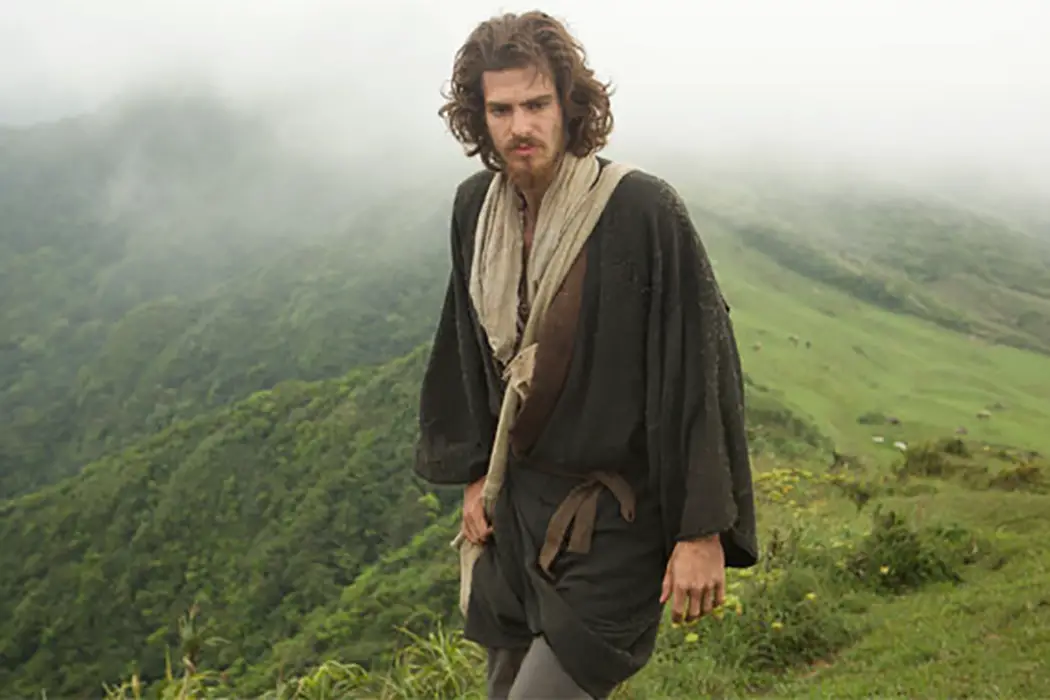
David is a film aficionado from Colchester, Connecticut. He enjoys…
Martin Scorsese‘s Silence begins with a dark, blank screen, with only the gentle humming of cicadas heard on all sides. It then immediately opens up to an overcast shot overlooking the banks of a river, where numerous people are being strung up and tortured.
Such a peaceful moment undercut by extreme violence is very much an indication of what’s to come. Though intimate in scope, Silence has much larger implications; it might just be amongst Scorsese‘s finest works.
17th Century Japan
Silence is a film that Scorsese has been trying to bring to the big screen for years. The film is based on a novel by Shūsaku Endō, which is itself based upon real incidents that occurred during the 17th century in Japan, though with some names changed.
Two Portuguese priests named Sebastião Rodrigues (Andrew Garfield) and Francisco Garupe (Adam Driver) make their way to Japan in order to spread Christianity and to locate their former mentor Cristóvão Ferreira (Liam Neeson), who had become lost some years before. Although Christianity was outlawed in the country at the time, there were many isolated pockets of converted peasants, who yearned to see the priests due to their desire to be blessed and cleansed of sin.
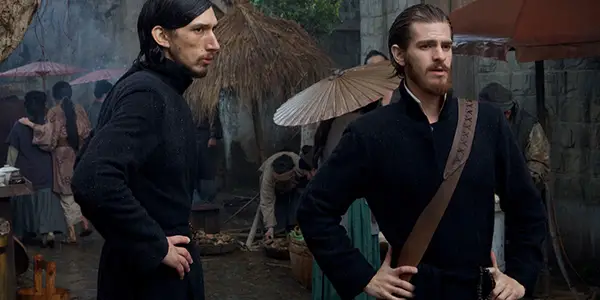
After some time, news of the priests spreads, and the people they had helped are soon captured and severely punished for practicing Christianity. Not long after, Rodrigues and Garupe themselves are also found. Rather than being punished in a similar manner, though, Inoue Masashige (Issey Ogata), an Inquisitor of Japan, instead plays a brutal game with the Japanese peasants, torturing them in a sadistic way in an attempt to get the Fathers to denounce their beliefs. Christianity, as they claim, has no place in Japan.
A Martin Scorsese Film
Silence contains not only similar religious underpinnings as much of Scorsese‘s work, but also many of his technical trademarks. An example includes the use of voice-over narration, which here is almost exclusively by Andrew Garfield’s character (though occasionally branching out to others). In a soft-spoken cadence reminiscent of a Terrence Malick film, Garfield fills the transitional moments in the film with his inner dialogue. It’s a practice that is occasionally overdone, yet it’s also not too obscure or out-of-place, keeping the film grounded and engaging.
Much like Scorsese‘s past work, the film also doesn’t shy away from brutality, though the violence is more off-handedly observant as opposed to gratuitous, choosing not to linger on the savagery any longer than necessary. This is no Taxi Driver, though there are some scenes, such as one taking place along the shore with a rising tide, that might still be quite excruciating to sit through.
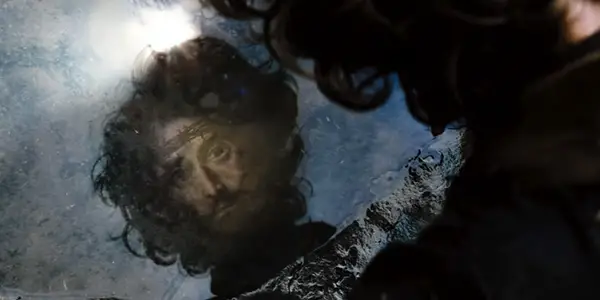
Silence is also, not by coincidence, a film that triumphs with its use of it. Much like the opening scene, the majority of the film is simply enveloped in the sounds of the world around the characters – the crashing of waves, birds chirping, and occasionally even lapsing into complete and overwhelming stillness, which is especially notable during the film’s most poignant and devastating scene. The minimalist cinematography by Rodrigo Prieto contributes greatly to this tone, with the camera often focusing on nature and landscape shots as opposed to centering on characters’ faces.
Though Scorsese is well known for his energetically-driven soundtracks and sometimes excessively-directed camera movements, Silence is a refreshing alternative. It’s a film that doesn’t tug you along like his past work; instead, it simply presents its stark and relentless images, captivating purely on these aspects alone.
Period Setting and Influences
Set in feudal-era Japan in the 17th century, comparisons to Akira Kurosawa‘s epics are not unwarranted. Focused on tight-knit villages much like the one in Seven Samurai, the Jesuit priests seem to serve a similar purpose to the samurai warriors of that film – though here, instead of fighting the outsiders, they instill a sense of hope and tranquility to the poverty-stricken peasants that otherwise have nothing to live for.
The only real distinction here is that, in contrast to Kurosawa‘s films, which even if taking place in a small village feel like much larger productions, Silence never develops beyond this. The villages don’t teem and bustle with life like they do in a Kurosawa film, and in addition, there is never the sense of standout characters outside of just a few faces. This is far from a negative, though, as the film is very much an individualized perspective of the world, seen through Father Rodrigues’ eyes.
Andrew Garfield (and the rest)
Silence is really Andrew Garfield‘s film almost as much as it is Scorsese‘s. Hot off Mel Gibson‘s WWII drama Hacksaw Ridge, it’s hard not to compare the two characters he plays, however different their ultimate impact may be.
Rodrigues begins with a similarly naive perspective as Desmond Doss, with the thought that, even in a dangerous and unaccepting world, he can do some good simply by practicing his religious beliefs. Yet, he is ultimately even more layered, transcending to a higher plane of understanding as the film goes on. Through Garfield‘s committed and sensitive portrayal, Father Rodrigues matures into a character of sophisticated depth.
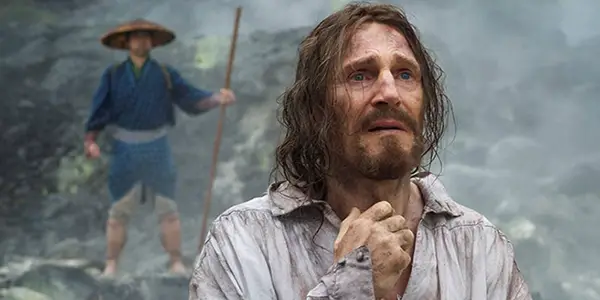
Adam Driver, as the Father alongside Garfield, unfortunately doesn’t leave the same impression, though this is mostly due to the film’s method of splitting the two characters off from one another after some time and then exclusively focusing on Rodrigues. Liam Neeson, who only emerges later on in the film, is able to instill more of a memorability, with his religious-heavy interactions with Garfield being amongst the overall highlights.
The scene-stealer here, though, is likely to be Kichijiro (Yōsuke Kubozuka), a character who serves as the audience proxy, committing the types of choices that an average person would be most likely to make under the circumstances. Kubozuka plays the character as a rattled, tragic figure; though his untamed presence also serves to break the tension during some of the film’s more harrowing moments.
Religious Questionings and Meanings
The subject of Silence is nothing new amongst Scorsese‘s filmography. In the past, he has helmed similar religious-themed films such as The Last Temptation of Christ and Kundun; in addition, religious undertones are often present even in the gangster films for which he is most associated, such as in Mean Streets or Goodfellas.
These films focus on what it means to be religious in a hostile world – can one still trust in God’s will despite all the atrocities around them? This is very much the quiet understatement of Silence – Rodrigues (Garfield), in witnessing what happens to people who have converted to Christianity, hears no clear response from God about what he must do. The dilemma is this: if he denounces his beliefs, the lives of the people who are being tortured will be saved, yet this is also against everything he stands for.
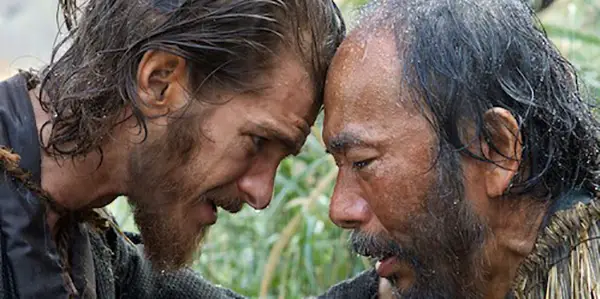
In a way, the film is very much a companion piece to The Last Temptation of Christ. In that film, Jesus is seen from more of a humanized perspective than he is usually portrayed, questioning whether he must endure suffering and dying on the cross in order to provide salvation to the meek. Here, Rodrigues questions his own stance as a Jesuit priest – if he commits apostasy and denies God, will he be punished, or is it worth it to save the lives of the Japanese peasants?
Through a series of exchanges between Father Rodrigues and the Japanese Inquisitor, the film questions the meaning of belief, and whether it can do more harm than good in a place where, as the Inquisitor states, there are no roots for it. These back-and-forth conversations do occasionally overstay their welcome, yet even at their most unsubtle, it’s not terribly frustrating to the film’s overall effect. Silence, though with ripe potential, thankfully never tries to force-feed its religious agenda.
The film interestingly remains ambiguous through its last few moments, leaving much unsaid; it succeeds as a result of its unwillingness to provide a definitive answer.
Conclusion
To conclude, Silence is a low-scale yet quietly profound film by Martin Scorsese, which focuses on the very essence of what it means to accept and live with religion in your life, despite inherent difficulties and repeated tests of faith.
As someone who is not personally religious, yet has always been fascinated by religious ideas, Silence is just as powerful to me in its grander implications. It’s a film that made me question the nature of God and the power of faith, and for someone who doesn’t consider themselves particularly spiritual, that’s quite a commendable feat.
What did you think of Silence? What is your favorite Martin Scorsese epic?
Does content like this matter to you?
Become a Member and support film journalism. Unlock access to all of Film Inquiry`s great articles. Join a community of like-minded readers who are passionate about cinema - get access to our private members Network, give back to independent filmmakers, and more.
David is a film aficionado from Colchester, Connecticut. He enjoys writing, reading, analyzing, and of course, watching movies. His favorite genres are westerns, crime dramas, horror, and sci-fis. He also enjoys binge-watching TV shows on Netflix.













